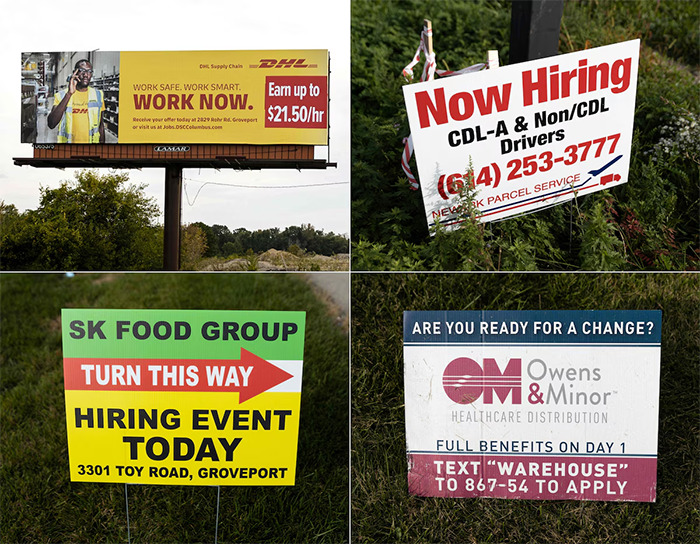
One reason so many are quitting: We want control over our lives again
The pandemic, and the challenges of balancing life and work during it, have stripped us of agency. Resigning is one way of regaining a sense…
Thought Leader: Amy Cuddy

We’re in the thick of strategic planning season—a time of big binders, slide decks, and multi-day meetings designed to map out the future. But when the unexpected hits, how much of that work actually helps?
Too often, we plan for a world that doesn’t exist. We build for order when the world delivers chaos. That’s why we don’t need better strategic plans—we need better strategic preparedness.
Because clarity is the new strategic edge. You don’t just need a clear plan, you need space for clear thinking, clear priorities, and clear ways to adapt when the inevitable disruption comes.
Planning is based on the expectation of control. It assumes order, stability, and predictability. But in today’s environment—AI disruptions, economic volatility, shifting customer demands—that assumption is broken.
Preparedness, by contrast, is grounded in the expectation of change. It’s about building capacity, not control. It embraces adaptability over accuracy. It prizes clarity over perfection. It’s the difference between betting on a specific future—and being ready for many.
“Plans are worthless, but planning is everything.” — Dwight D. Eisenhower
That quote might seem contradictory, but it nails the point. The process of thinking through possibilities is essential. But overly rigid plans become obsolete the moment reality changes—and reality always does.
Everyone knows Aesop’s fable about the ant and the grasshopper. But let’s imagine a corporate version:
The ant spends the summer preparing: gathering food, storing it for winter, strengthening its tunnels. The grasshopper? He brings in a consultant to write a 60-slide deck on “Winter Opportunity Alignment.”
When winter hits, guess who survives?
Too many companies are still the grasshopper—with plans that look great on paper, but little flexibility or resilience when conditions shift. Because we’ve confused preparation with preparedness and planning with clarity.
Companies with hyper-optimized, “just-in-time” supply chains were exposed when COVID hit. There was a plan—but no buffer, no alternatives, no scenario readiness.
Companies like Toyota adapted faster because they’d already built resilience into their systems—investing in supply chain flexibilityand cultivating multiple sourcing partners even when it wasn’t “efficient” in the short term.
There’s an old maritime saying: “When the seas are too rough to sail, fishermen repair their nets.” That’s preparedness.
But what do many companies do when seas get rough? They call more meetings. They shuffle priorities. They launch new “transformations.”
Instead of strengthening the systems that help us respond to chaos, we waste time reacting to it. We repair nothing—we just get busier.
Preparedness means using downtime to sharpen tools, realign teams, clarify decision authority, and scenario plan. It means building clarity and adaptability into our culture before we need it.
I’m not saying we don’t need strategic planning. I’m saying that how we’re doing it is onerous, uninspired, and too reliant on a single doc or direction.
In too many orgs, planning is a show. We over-polish slide decks. We obsess over timelines. We write 30-page plans that no one will read again. We perform alignment instead of enabling action.
We’re drowning in planning meetings—while teams quietly ignore the plan and focus on the real work of making progress. According to research, unclear planning and slow decision-making processes are major drivers of leader burnout and organizational stagnation. In fact, Gartner reports that 65% of decisions made today are more complex than they were just two years ago, often involving more stakeholders, more data, and more risk. Combined with a rise in decision fatigue and change exhaustion, these unclear processes are now stalling execution, eroding engagement, and hindering growth.
We need a reset.
Let’s stop pretending we can predict the future. Instead, let’s prepare to meet it. That means:
This planning season, stop obsessing over the perfect roadmap. Start asking:
This isn’t about ditching plans. It’s about planning for the right thing: readiness, clarity, adaptability.
Because if you’re not preparing, you’re pretending.
Lisa Bodell is a leading expert on innovation, simplifying complexity, and creating impactful organizational change. Her dynamic approach to leadership and efficiency empowers companies to embrace creativity, streamline processes, and foster a culture of innovation. As an author and founder of FutureThink, Bodell’s insights provide actionable strategies for companies to thrive in an ever-evolving business landscape. To bring Lisa Bodell’s expertise to your event, contact WWSG.
One reason so many are quitting: We want control over our lives again
The pandemic, and the challenges of balancing life and work during it, have stripped us of agency. Resigning is one way of regaining a sense…
Thought Leader: Amy Cuddy
Molly Fletcher: Can drive offset your burnout at work?
This piece is by Molly Fletcher. People assume that drive depletes energy. They believe that level of intensity, focus and daily effort leads to burnout.…
Thought Leader: Molly Fletcher
Paul Nicklen: A Reverence for Nature
Standing in front of any of Canadian photographer Paul Nicklen’s large-scale images in the current exhibition at Hilton Contemporary, one cannot help but be totally…
Thought Leader: Paul Nicklen

